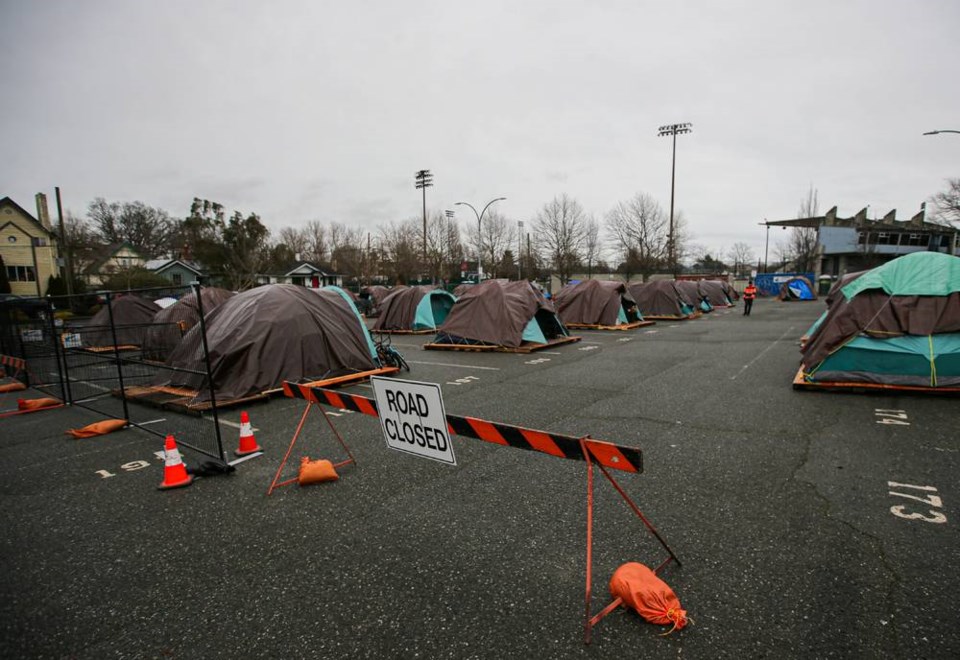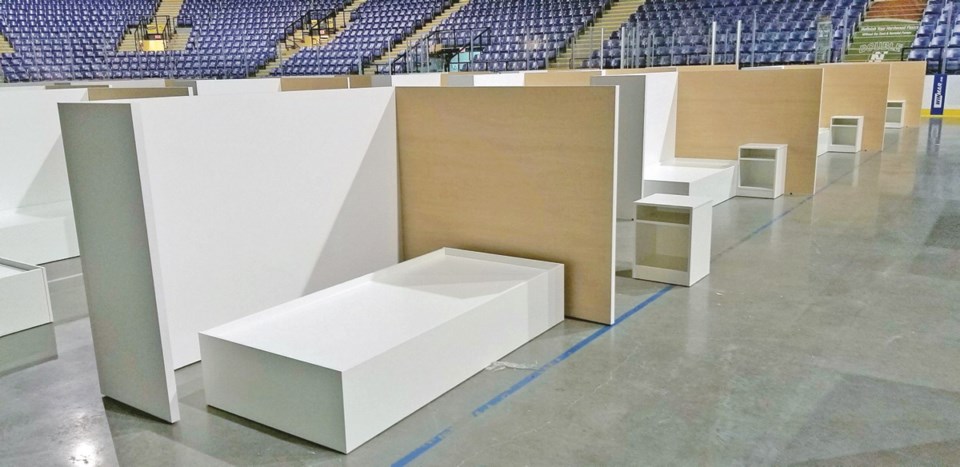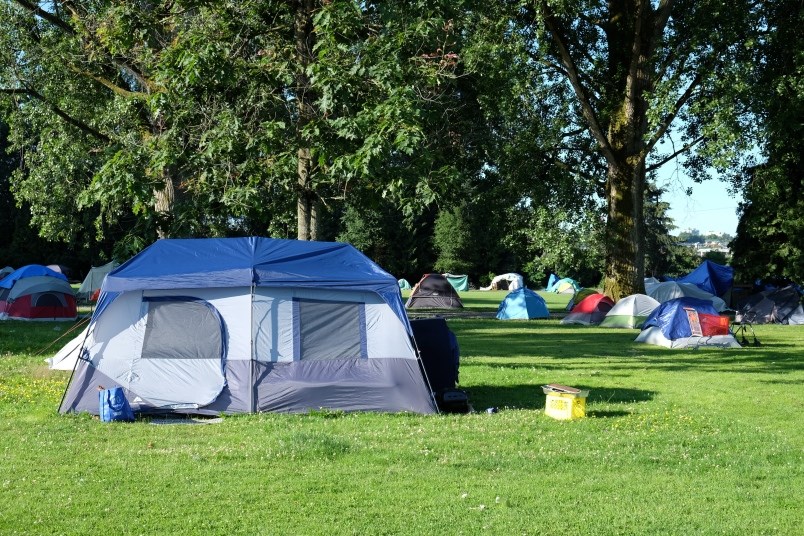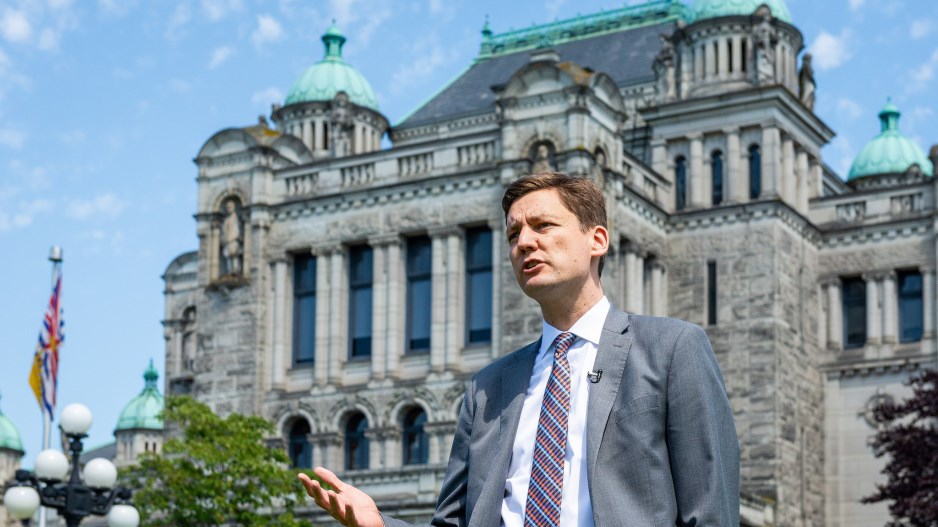The B.C. government’s goal is to move everyone living in Victoria parks — an estimated 200 people — into some form of shelter by the end of March.
In Vancouver, where about 200 people live in the Strathcona Park encampment, the goal is to move everyone inside by the end of April.
The person making those promises is David Eby, the province’s attorney general, who also became the minister responsible for housing after last fall’s provincial election.
Eby has a long history of fighting for the rights of marginalized people in his work at the Pivot Legal Society and B.C. Civil Liberties Association — if he can’t get more people off the street, who can?
It was one of the questions Glacier Media put last week to the NDP MLA for Vancouver-Point Grey, who acknowledged in a telephone interview that his previous work is informing his approach to battling the province’s homelessness crisis.
“I’m calling on old contacts to find out what our best approach is. I’m reaching out to people I haven’t talked to in a long time but still have relationships with,” Eby said.
“The overarching philosophy and priority of getting people inside and getting them the support they need is entirely formed by my years working with folks living outside or in the Downtown Eastside.
“I learned a lot in my time there, and I’m very grateful for it. It’s a chance now, really, to do some payback.”
The following is a condensed and edited version of the interview.

How do you expect to move everyone out of the Strathcona Park encampment by the end of April, and what are you basing that timeline on?
I asked B.C. Housing to prepare a plan with a timeline that they thought they could meet. So they looked at the tools that they had available and how quickly they could partner with nonprofits and staff up and all those kinds of pieces, and they came up with a date at the end of April.
So what exactly are people going to be moving into? Shelters? Rental buildings? Hotels?
There’s an array of responses because of the challenges of moving so many people at once. So, for some folks, we’re looking at rent supplements to move people who are currently in supportive housing — but don’t need the support anymore — and move them into the private rental market. That’ll free up space and supportive housing for people who might be in shelters right now to go into supportive housing. And that will then open up shelter spaces.
Did I hear right that some homeless people are being moved into [Save-on-Foods Memorial Centre] in Victoria and will live in cubicles, or pods, with a bed before housing becomes available?
Yes. We need somewhere for people to be that is dignified and appropriate while they wait for permanent housing to be opened. So we’re going to have some of those transition-type spaces more in the nature of a shelter.

Are you considering the Pacific Coliseum or B.C. Place to do this in Vancouver?
No, but not unlike a large space like that where people can socially distance and we can put people in these pods. I understand Staples actually makes them for B.C. Housing. These are cubicles with walls with a bed with a locking drawer and a desk and a light. Public health [doctors] likes them for social distancing and I like them because they give people some dignity. So they’re not on the floor, but neither are they permanent housing for people, which is where we’re going.
When you say shelters, you’re not talking about existing shelters and transforming them to include these cubicles, are you?
No, these would be additional spaces to get enough spaces to bring folks inside. Because of COVID, we have social distancing requirements that reduce the capacity of all the shelters, so there’s simply not enough space for people to be inside.
What about the homeless people in Vancouver who don’t live in Strathcona Park, which make up the bulk of the city’s homeless population. What’s the plan for them?
Like with what we’re doing in Victoria, we’re overshooting the number of spaces we’re bring online because we anticipate — as we get closer to the deadline of moving people out of the park — that people might be inclined to move to the encampment so they can get inside. And we’d like to get them inside, if we can. So that’s something that we are planning for. But we also have significant housing initiatives underway with the federal government and with the City of Vancouver in the next 12 to 24 months to really get people inside in a really significant way.
So new permanent housing is coming on board this year?
That’s right. So the biggest package of those are the Rapid Housing Initiative pieces from the federal government and the modular housing units in the partnership between the province and the city in the next 12 months. And then as you go to the next 24 months, we have five or six streams of funding for social housing projects in Metro Vancouver.
Vancouver city council has, so far, declined to approve a plan to add so-called tiny house villages in the city for homeless people. Yet, we see that happening in Duncan and soon in Victoria [and also the Comox Valley]. Do you support tiny houses?
It really depends on the perspective of the individual and the situation of the individual municipalities where cities want to engage in these kinds of temporary housing responses — because they have permanent housing coming on, or they see it as an appropriate interim solution.
I’m very supportive of community working together to help solve the problem, as long as we don’t create a world in which these are the permanent long-term housing solutions for people where you don’t have your own bathroom and you don’t have your own cooking area and so on.
I want to really welcome the idea of community getting involved to help solve the problem. And that’s what’s happening in Duncan and Victoria with these proposals.
As you’re aware, Vancouver has a history of encampments, so what’s to say that no matter what success comes at Strathcona, that another encampment will pop up soon after?
So, the good news is that about 85 to 90 per cent of the people who were housed from the Oppenheimer Park encampment [in the spring of 2020] are still housed. This should help people understand that the folks in the Strathcona encampment are different people. Which means that if we help those folks, we should be making significant progress toward addressing the number of people living outside in Vancouver.
It’s not going to be everybody who is currently homeless. So there is a significant and very real situation where we are not going to have enough spaces to solve street homelessness in Metro Vancouver in the short term.
This is a long-term project. We’re going to have shelters, we’re going to have transitional spaces. We’re going to be responding to challenges of a 16-year legacy of underfunding of housing that was under the B.C. Liberals. And we’re making some progress, but it is slower than I would like and we’re hoping to find ways to accelerate it.

What do you think of Coquitlam Mayor Richard Stewart’s push to reopen one or more buildings on the Riverview property in Coquitlam to treat people with mental-health problems and addictions?
We’ve had overwhelming enthusiasm from the big city mayors [about having “complex care” housing centres in their communities]. I had a call with them last week. On our call, they said: “Look, we’re not, ‘yes, in my backyard,’ we’re ‘please in my backyard.’ We want to host these centres and people in our communities need this help.”
They have the potential to be quite transformative in terms of the quality of life for some folks who are really challenged — and see what difference it makes in a community when there’s not 50 people with very profound mental-health and addiction issues and brain injuries suffering in the middle of the sidewalk in a downtown, and instead being supported by nurses and doctors and social workers.
So why not just reopen a building at Riverview?
It’s certainly possible that one of the sites could be at Riverview or there could be a response that includes Riverview. Riverview is really important in the community. I find it symbolic of the undertreatment, the under response, historically, of governments to the health needs of people with serious mental health issues after the deinstitutionalization [of Riverview].
I do worry that for some people Riverview represents the idea that we’re going to pick everybody up in a bus and take them to Riverview and no one is going have to think about this issue again. Instead, to my mind, Riverview is a remarkable opportunity because the community is enthusiastic about these kinds of supports. The supports are obviously needed. We’ve already opened a significant number of beds there, and there’s opportunity to open more to provide serious mental- health and addictions support.
How much will these “complex care” centres cost?
The work is still being done. It’s in very early stages about what the supports will be, what needs to be there. This isn’t something that’s going to be done overnight, because we want it to work. I’m willing to bet that the cost will be significantly less than the current cost of homelessness and how we maintain people that have these kinds of challenges.
— With a file from the Times Colonist



